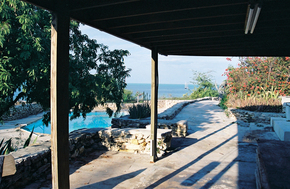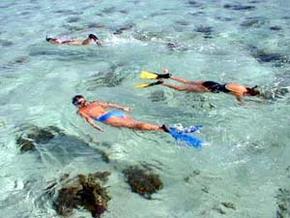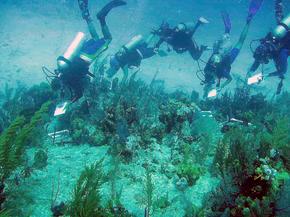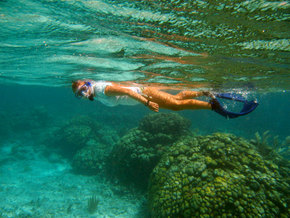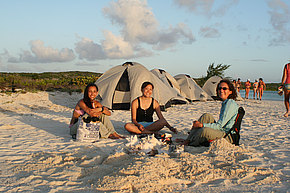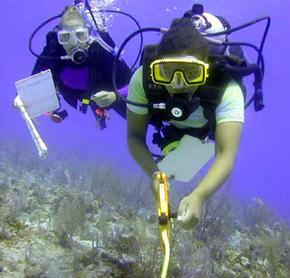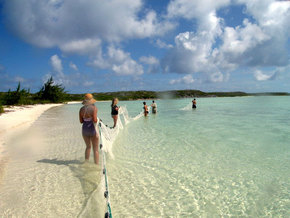NOTICE: WE MUST GET THE FIELD STATION A DEPOSIT BY FEB. 28, 2009 TO SECURE OUR SPOTS! THUS, IF YOU WANT TO GO TO THE CAICOS, YOU MUST CONTACT STEVE WEEKS (330-972-7156) IMMEDIATELY TO SECURE YOUR SPOT ON OUR TRIP!
Pictures from the course:
Center for Marine Resource Studies
Course Description
This course is one of the few “hands-on” courses in the department that allows the students to learn about organismal biology by observing plants and animals in their native habitat. This is our second year traveling to South Caicos Island to study coral reefs and tropical terrestrial communities! We stay at the Center for Marine Resource Studies in Cockburn Harbor, Caicos, which is an excellent research and teaching facility that has its own dock and motor boats as well as an excellent lab facility.
A. Role of the Course and the Instructor’s Philosophy
1. Role of the course
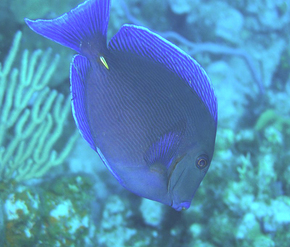 Tropical Field Biology (TFB) is a broad spectrum course, dealing with zoological, botanical, and ecological topics. Because of its broad approach, TFB has historically fulfilled prerequisites for a two of departmental tags (i.e., Ecology and Zoology). It is one of only two courses offered in the Biology Department in which the students stay for an extended time (~2 weeks) in a field station, this case being in Cockburn Town, Caicos. TFB is an in-depth exploration of tropical ecosystems. TFB is team-taught by Steve Weeks and Paco Moore.
Tropical Field Biology (TFB) is a broad spectrum course, dealing with zoological, botanical, and ecological topics. Because of its broad approach, TFB has historically fulfilled prerequisites for a two of departmental tags (i.e., Ecology and Zoology). It is one of only two courses offered in the Biology Department in which the students stay for an extended time (~2 weeks) in a field station, this case being in Cockburn Town, Caicos. TFB is an in-depth exploration of tropical ecosystems. TFB is team-taught by Steve Weeks and Paco Moore.
The majority of the class deals with ecological topics, using species and communities in the Caicos as examples of these ecological processes. This orientation allows students to take away from the course a general knowledge of the interactions and processes of animal and plant communities that they can apply to other ecosystems, rather than concentrating on in-depth knowledge of tropical organisms that they may never see again.
2. Philosophy
TFB is a field-intensive course, and is designed to excite students about biology and to get them asking questions about the roles of animals and plants in a variety of communities. We introduce the students to 4 communities (coral reefs, subtidal/sandy-bottom, rocky intertidal, 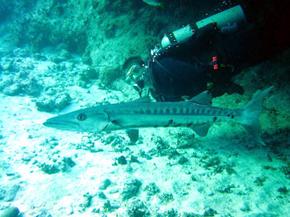 andmangrove swamps), and discuss the organisms that play similar roles within each community. Therefore, our main goal is to teach the students about broad-scale ecological concepts using examples drawn from a tropical setting.
andmangrove swamps), and discuss the organisms that play similar roles within each community. Therefore, our main goal is to teach the students about broad-scale ecological concepts using examples drawn from a tropical setting.
Additionally, the course is designed with the philosophy of teaching the students about ecological processes in tropical habitas, and then having them do a field project in the Caicos to better understand the ecological processes we learn in the class room. The 10-day trip to the Caicos is ideally suited for this approach to learning.
B. Instructional Design and Delivery
1. Instructional Techniques
The course is split into two components: lectures in Akron and a student-designed field project in the Caicos. In Akron, we meet for three lectures before our trip. In these meetings, we present lecture material and cover logistics for the trip to the Caicos. In the Caicos, we split the time between field trips and working on the students research projects.
The lectures cover a wide range of topics (from oceanography to invertebrate zoology and ichthyology to ecology). For the survey lectures (e.g., introducing the students to the major animal phyla that they will see in the Caicos), we present the facts about each group (e.g., types of organ systems, etc.). Thus, the major objective in this portion of the course is to introduce the students to many of the players in the various communities we will experience.
For the conceptual lectures (e.g., oceanography and ecology), we present an array of conceptual topics in community ecology that combine to regulate communities (e.g., trophic webs, species interactions, etc.). We always attempt to explain these concepts in understandable language. We present the unique biotic and abiotic factors that affect each of the 4 communities, but also emphasize the similar factors across all habitats. For each community, we outline how these factors combine to select for the types of species found in each habitat. The overarching goal is to get the students to recognize categories of players within each community, and to understand the roles of each player. If this is accomplished, the students will be able to bring some level of ecological understanding to virtually any community that they experience.
Testing is broken into four sections in this course. First, we have three quizzes about the previous week’s lecture (15% of the total grade) that assessess understanding of the lecture material. Second, the students are graded on their pariticaption in the many field trips in the Caicos (15% of the total grade). Third, the students are expected to keep a notebook of what they saw and learned each day of the field trip (30% of total grade). Finally, each student develops a write up of a research project that they would conduct if they were to return to the Caicos in a research capacity (40% of their total grade). This final paper is required to be completed within 3 weeks of returning from the Caicos. This write up is in the format of a research grant proposal, and will outline the question(s) asked by the students, outline the methods that they would use for their project, and a discussion about the likely results of their proposed project.
Some of the activities on this trip include the following:
Snorkeling and SCUBA diving are a main part of the trip. The lab provides SCUBA tanks and weights for free, so students who bring their own gear can dive as much as possible!
We will also get a chance to camp on a small off-shore island, Long Cay, which will provide an interesting view of nightlife on a small island community:
We plan on doing several field sampling techniques, such as underwater behavioral observations, shoreline fish seining, and terrestrial field trips

